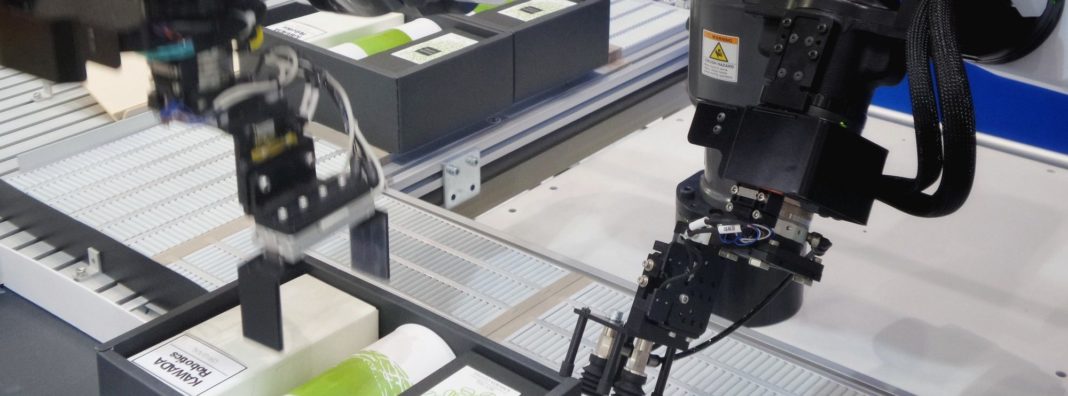
Policymakers worry about the impact on workers from robots and other automation techniques. COVID-19 has pushed many companies to consider automating or embracing robots for public health. Workers worry that after the pandemic, they’ll find a robot in their place. Those fears are overblown. After all, it took a global pandemic for many companies to embrace automation.
Fears about losing jobs are realistic in some industries. Vending machines, electronic toll booths are just two forms of everyday automation. However, the data don’t support the broad strokes of a fearful story. Instead, automation will be a slow process in many sectors. If automation were replacing workers, companies would be investing more in these technologies, resulting in higher output from fewer people. Instead, productivity data is uneven. Firms are reluctant to change, and only some industries seem to be affected by robotics or other automation methods.
The most dire stories about a job apocalypse are hard to find, even though there are some occupations affected by robotics and automation. Still, everyone would benefit from better knowledge. The Census seems poised to help answer many of the tough questions when they release a new series of new datasets later this year that will detail the levels of automation in significant industries. The following post reviews the data as it stands now, detailing productivity across firms and how industries change after automation.
Productivity across firms
If automation were on the horizon, businesses should be investing in these labor-saving technologies, which would be present in business investment surveys. But business investment has plateaued. As the graph below helps to illustrate, domestic investment in the private sector has been below the peaks in the early 2000s.
Second, the official numbers from the Bureau of Labor Statistics on productivity are hardly enthusiastic. From 2007 to 2019, the economy’s productivity grew by the second slowest rate since these statistics were first collected. The table below puts this into perspective.
Productivity change in the nonfarm business sector, 1947-2019
Source: U.S. Bureau of Labor Statistics
The slow aggregate numbers do hide variation within industries. Some firms have gotten much more productive. As the OECD calls them, frontier firms have taken off all across the world, including the United States, Canada, Japan, and the European Union. These companies exist across the economy in retail, manufacturing, mining, services, telecommunications, and the information sector. Productivity growth is sluggish because all of the other firms aren’t keeping up.
The impact of automation and switchover costs
Although some firms have gotten more productive, automation techniques are unevenly adopted across industries. The classic example of robots working in manufacturing underscores this point. From 2004 to 2013, there was virtually no change in the level of robotization in non-metallic mineral products like ceramic and glass. But, the automotive industry, which was already heavily reliant on robots, experienced a spectacular rise in the robot density between 2004 and 2013.
Understanding the impact of robots and other automation technologies will require analysis of every industry. In particular, it’s usually larger firms that can afford the costs of automating their processes. As the authors of a report on Europe’s superstar manufacturers explain,
A firm will invest in productivity-enhancing technology, such as industrial robots when the expected gains from a reduction in marginal costs are greater than the fixed costs of adoption. Since large firms with higher output and sales tend to benefit more, they might be more willing to incur the fixed costs of investment.
Research into nursing homes, for example, found that automation technologies decreased the staffing levels by 5.8 percent in high-end nursing homes. In comparison, low-end homes saw an increase in staffing by 7.6 percent. As the authors of the study pointed out, “these findings suggest that the impact of automation technology on staffing decisions depends crucially on a facility’s strategic position in the local marketplace.”
Studies of one specific Dutch company undergoing automation found a range of complex impacts. Overall, workers were more likely to separate from the firm and see a decrease in days worked, leading to lower wage incomes, but the overall wage rate didn’t change. These lost wage earnings were only partially offset by various benefits systems, but the lost earnings were disproportionately borne by older workers and workers with longer firm tenure.
Meanwhile, a large study of Spanish manufacturing firms found that more productive firms were more likely to adopt robots, leading to substantial output gains over time. While these frontier firms increased their worker numbers, at the same time, the report found “substantial job losses in firms that do not adopt robots, and a productivity-enhancing reallocation of labor across firms, away from non-adopters, and toward adopters.”
Firms struggle to keep up because it is costly to transition to new production processes that use robotics or insights derived from advanced data analytics. These switchover costs can sometimes be insurmountable. Survey after survey finds that technology upgrade projects offer businesses little or no advantage. Surveying a wide range of these reports, IBM found that 25 percent of technology projects fail outright, while another 20 to 25 percent don’t show any return on investment, with the final 50 percent needing massive reworking before being finished.
Competitors might influence a company’s willingness to adopt an automation technology, but these changes are minor when compared across industries. As Ryan Avent described it, “It is complicated to figure out how to get these systems working and operating in a way that generates profits. While labor is cheap, firms face little pressure to make those massive investments in intangible capital in order to automate key processes.” The disruption created by COVID might create a new crucible whereby companies experiment with new tech. As policy continues to respond to this crisis, leaders would benefit from knowing what is changing in real-time.
Conclusion
Importantly, the wheels are already in motion to better understand these changes. After being prodded by the Government Accountability Office in 2019, the Department of Labor began working with the Census Bureau to create a new set of stats to better understand how the workplace is affected by technological changes like automation and AI. Once the first of these reports are released next month, leaders will have their first look into this important part of the economy.
These datasets will give policymakers a baseline to understand how organizations and firms use robotics and other advanced automation techniques. Automation is an area that has been bereft of clear stats but is teeming with questions. Armed with information by Census, leaders will be able to craft appropriate responses.

